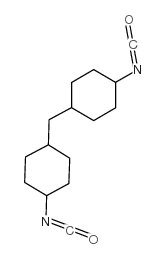Use of dose-response data to compare the skin sensitizing abilities of dicyclohexylmethane-4,4'-diisocyanate and picryl chloride in two animal species.
J C Stadler, M H Karol
Index: Toxicol. Appl. Pharmacol. 78(3) , 445-50, (1985)
Full Text: HTML
Abstract
Groups of English smooth-haired guinea pigs and BALB/cBy mice were exposed to dicyclohexylmethane-4,4'-diisocyanate (HMDI) and picryl chloride (PiCl) by topical exposure. Guinea pigs were challenged 7 days later by patch testing and responses graded at 24 hr. Application of high doses of each chemical resulted in extensive erythema and a large proportion of animals became sensitized. Lower doses produced less sensitivity. In mice, sensitivity was assessed by extent of ear swelling upon challenge 5 days following the sensitization exposure. In mice, as well as in guinea pigs, a dose-response relationship was apparent between the sensitizing dose and both severity of response and number of animals responding. For mice, comparison of the dose of chemical required to sensitize 50% of the animals (SD50) yielded 0.40 mg/kg for PiCl and approximately 0.20 mg/kg for HMDI. Use of the SD50 should provide a method for assessing the ability of various chemicals to cause contact sensitivity.
Related Compounds
| Structure | Name/CAS No. | Molecular Formula | Articles |
|---|---|---|---|
 |
Methylene-bis(4-cyclohexylisocyanate)
CAS:5124-30-1 |
C15H22N2O2 |
|
Multiple shape memory polymers based on laminates formed fro...
2015-09-14 [Soft Matter 11 , 6852-8, (2015)] |
|
Functionalization of graphene oxide nanostructures improves ...
2015-06-21 [Nanoscale 7 , 10410-20, (2015)] |
|
Fabrication of chiral amino acid ionic liquid modified magne...
2015-06-26 [J. Chromatogr. A. 1400 , 40-6, (2015)] |
|
Degradation studies on segmented polyurethanes prepared with...
2010-06-01 [Acta Biomater. 6(6) , 2035-44, (2010)] |
|
Preparation and surface characterization of HMDI-activated 3...
2008-06-01 [J. Biomed. Mater. Res. A 85(3) , 722-30, (2008)] |